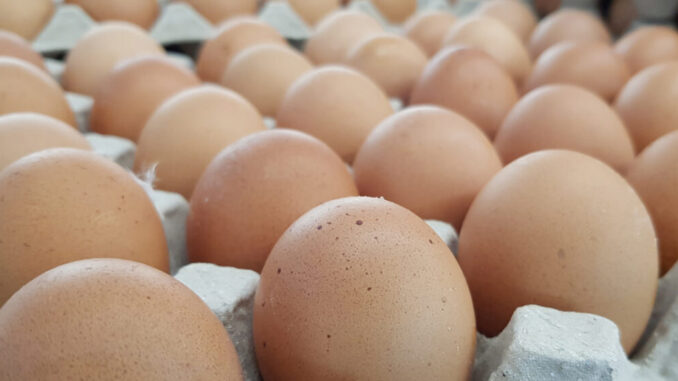
Nigerians have expressed worry that ever-rising prices of protein-rich foods in the country will, if not checked, compound malnutrition and worsen infant/nursing women morbidity and mortality rates.
Eggs, beans, milk, beef, chicken, pork and other protein-rich foods have become more expensive and non-prioritised among many poor households in the country.
A market survey conducted by The Guardian revealed that the cost of protein-rich food had increased by almost 100 per cent in the last year.
In Lagos, a crate of eggs (30 units) in most supermarkets is between N1900 and N2,150. Street price has also gone up from an average of N1200 in 2020 to between N1700 and N2000, depending on the size.
Again, a kilogramme of chicken laps costs between N2300 and N2500, while a whole chicken (about 1kgs) in most supermarkets costs about N4,000.
A live chicken (old layer) costs about N3000 and a broiler costs a minimum of N5000 in most live chicken markets in Lagos.
Specifically, at most supermarkets, an 800-900gm sachet of milk is between N3000 and N3400, depending on brands; a kilogramme of Titus fish is currently N1600 and Croaker fish is N2,500.
A consultant public health physician with experience in the management of diseases of public concern, Dr Olalere Olajide, said protein is very essential for the growth of cells, tissues and organs of the body. Its deficiency has far-reaching health and growth implications, she warned.
He said: “Children need protein to help build and repair cells, enzymes and hormones, which are very essential to the body functions.”
Olajide warned with an increase in the prices of major sources of protein like eggs, beef and fish, among others, there would be ‘’protein-energy malnutrition-related conditions such as Kwashiokor, Marasmus or the combination of the two conditions.’’
A UNICEF Nigeria report says the country has the second-highest burden of stunted children in the world, with a national prevalence rate of 32 per cent of children under five.
Also, an estimated 2 million children in Nigeria suffer from severe acute malnutrition (SAM), but only two out of every 10 children affected is currently reached with treatment. Seven per cent of women of childbearing age also suffer from acute malnutrition.
Again, the report said nearly half of all deaths in children under five years are attributable to undernutrition, which ‘’puts children at greater risk of dying from common infections, increases the frequency and severity of such infections, and delays recovery.’’
According to a United Nations report, malnutrition costs the global economy $3.5tn. Over the next 15 years, it’s estimated that malnutrition would predispose 500 million young people to the risk of permanent health challenges.
The World Health Organisation (WHO) equally says globally in 2020, 149 million children under five were estimated to be stunted (too short for age), 45 million were estimated to be wasted (too thin for height), and 38.9 million were obese as a result of malnutrition.
In sub-Saharan Africa, about 28 million children are experiencing stunted growth due to malnutrition. Stunting prevents children from developing to their full potential mentally and physically, and it is largely irreversible.
Therefore, Nigerians have called on the government at all levels to speed up efforts to increase food production and availability, especially protein-rich food crops, to avert acute protein deficiency, malnutrition, stunting and wasting of under-five children and women.
Protein is one of the essential macronutrients, and they refer to foods that the body needs in large amounts. The other two major macronutrients are carbohydrates and fat. Together with micronutrients (vitamins and minerals), they make balanced diets if taken in moderate proportions.
However, millions of Nigerians are suffering from protein deficiency, in particular, and prominent micro-nutrients, like Vitamins A.
According to Nigeria Protein Deficiency Awareness Campaign, carbohydrates are the most consumed food among Nigerians and rice topped the list with 91 per cent, closely followed by ‘swallows’ such as eba, pounded yam, tuwo, amala, etc. at 83 per cent. 58 per cent of sampled dieticians and nutritionists insisted that the protein intake of Nigerians is insufficient.
The reports showed that fundamental factors determining the necessity of meal items are availability (79%) and affordability (68%).
END

Be the first to comment